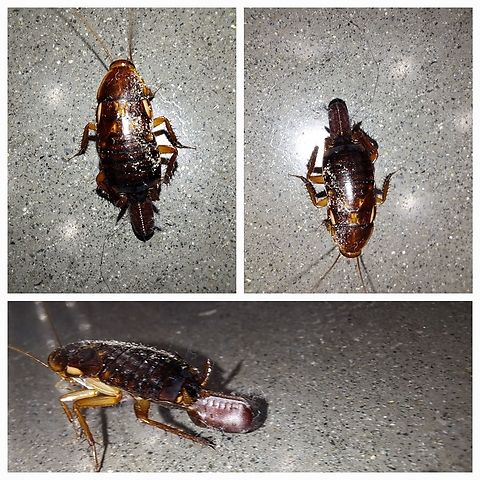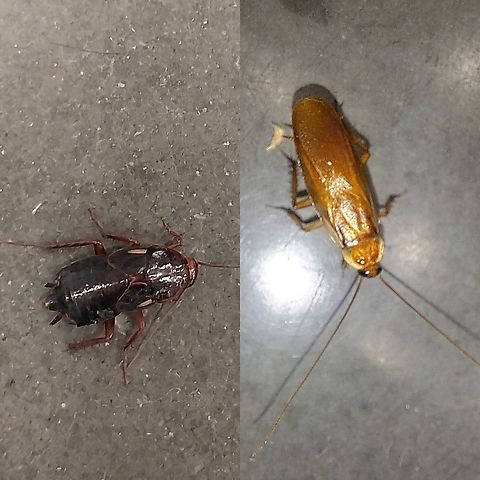
Appearance
Adults measure around 3 cm in length. Adult males are a brownish orange or red, are slender, and have long, yellowish wings which allow it to attract females and to glide. Adult females are dark brown to black, with cream-colored markings on the shield and a cream-colored stripe edging its wings; they are broader than males, and have short vestigial wings. Nymphs are brown in front, black on the rear, and are wingless.
Distribution
The species is found in central Asia, the Caucasus Mountains, and northeastern Africa. It can be found throughout the area of Afghanistan, Azerbaijan, Egypt, India, Iran, Iraq, Israel, Jordan, Kashmir, Libya, Palestine, Pakistan, Saudi Arabia, Sudan, the United Arab Emirates, and the United States.Habitat
The Turkestan cockroach is primarily an outdoor insect, not known as an aggressive indoor pest, unlike some cockroach species such as the German and brown-banded cockroaches, though it will inhabit areas around dwellings where shelter can be found. However, in specific localities or tropical locations, it can become a significant indoor pest. Of occasional indoor interlopers, males are more commonly encountered than females, due to their ability to fly and an attraction to lights. In Arabia, it lives beneath stones in damp hollows, desert farms, and wadis, feeding primarily at night.Food
In the US, Turkestan cockroaches are sometimes kept to feed to pet reptiles and other insectivores, chosen partly because they can't climb smooth surfaces and don't burrow. Cockroaches have been replacing crickets, the most popular feeder insect for decades, due to the cricket's noise, odor, short lifespan, and expense. Turkestan cockroaches are a popular choice of species, and are readily available for sale over the Internet, which may hasten their spread to new habitats.Although reliable information on specific dietary requirements of insectivores is scant, Turkestan cockroaches provide a high-protein, low fat nutrition composition similar to crickets, more so than mealworms or superworm larvae provide. The gut contents of the cockroach, depending on its diet, may provide essential nutrients unavailable from a cockroach with an empty gut.
In a study of commercially ordered specimens, small second instar nymphs consisted of 21% dry matter, made of 76% crude protein and 14% crude fat, while medium third instar nymphs consisted of 28% dry matter, made of 53% crude protein and 27% crude fat. Mineral content is well represented except for a low calcium:phosphorus ratio typical in cockroaches, and calcium supplementation may be advisable. Vitamin A and E content was relatively low, and is generally significantly higher in free-ranging cockroaches. Insectivores which fed on unsupplemented invertebrates have been found to suffer from vitamin A deficiencies, and a study of panther chameleons found vitamin A deficiency shortened life spans and reduced reproduction rates....hieroglyph snipped...
Turkestan cockroaches are rich in vitamin B12.
References:
Some text fragments are auto parsed from Wikipedia.